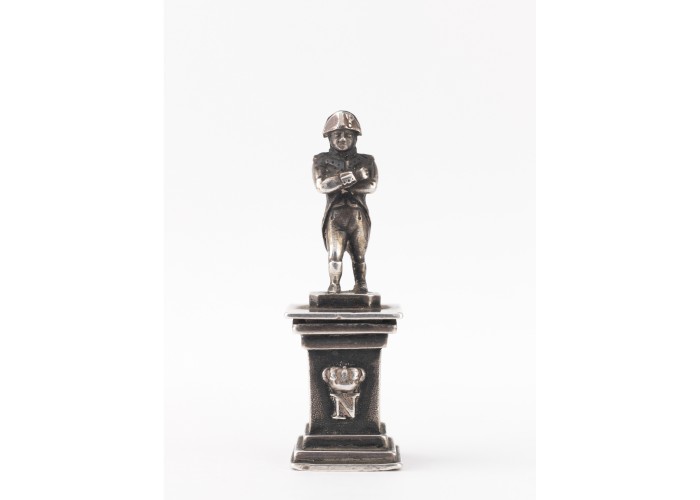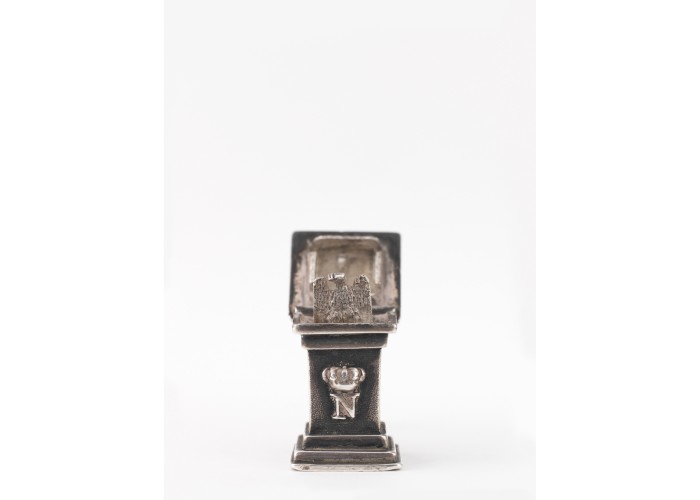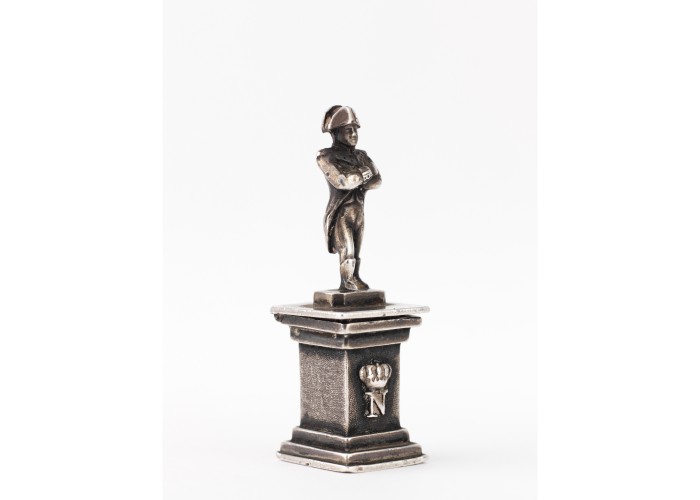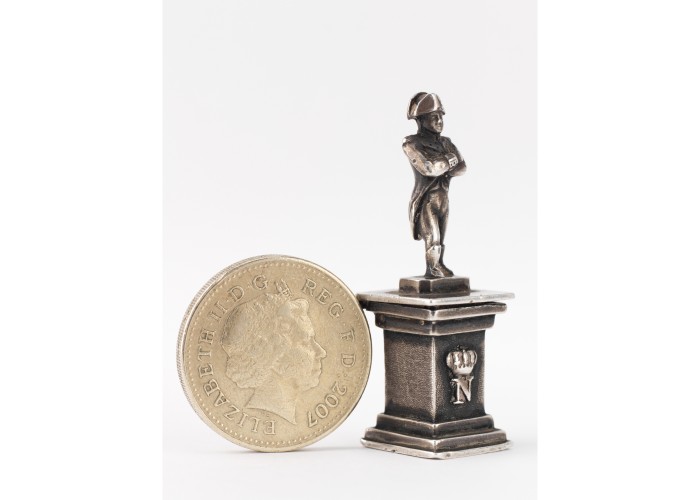Small Silver Napoleon Figurine
This delightful small silver figurine of Napoleon Bonaparte was carried onto the battlefield by an admirer of the Emperor. This was common practice amongst Napoleonic soldiery. Tucked away in a soldier’s deerskin knapsack, these talismans were both a sign of devotion and also of good fortune. This figurine stands on a hinged pedestal that opens to reveal a silver eagle – the symbol of the Napoleonic French Empire.
Other similar loyal Napoleonic personal items carried on campaign were inscribed or embossed snuff mulls, penknives, medallions or presentation pocket watches. Many figures were a cheaper variety than this example, being cast in bronze, brass or copper. This figure is cunningly designed so that when Napoleon is pushed backwards, a spring makes the eagle rise up from under him. Other figurines may be seen on display at the Le Caillou Farm Museum, south of Waterloo – Napoleon’s headquarters on the night before the battle.
The figurine was picked up by Captain Henry Festing, Royal Artillery. He also acquired a French cavalry sword. Festing was probably in the Netherlands at the time of the battle, but is not found on the medal roll for Waterloo. This officer probably purchased or found the two souvenirs when on a visit after the action of the 18 June. Captain Festing was the eldest son of a Royal Naval officer and he died in 1838. His brother, Captain Sir Benjamin Festing, was present at the Battle of Trafalgar.
-
Curatorial info
- Material: Silver and steel
-
Use this image
You can download and use the high resolution image for use in a non-profit environment such as a school or college, but please take note of the license type and rights holder information below
- Rights Holder: Copyright private collector. Photography Relic Imaging Ltd.
- License Type: Creative Commons
Private Collection
Some objects - such as this one - are owned by private collectors. Waterloo 200 cannot give information on the ownership or location of these items.












